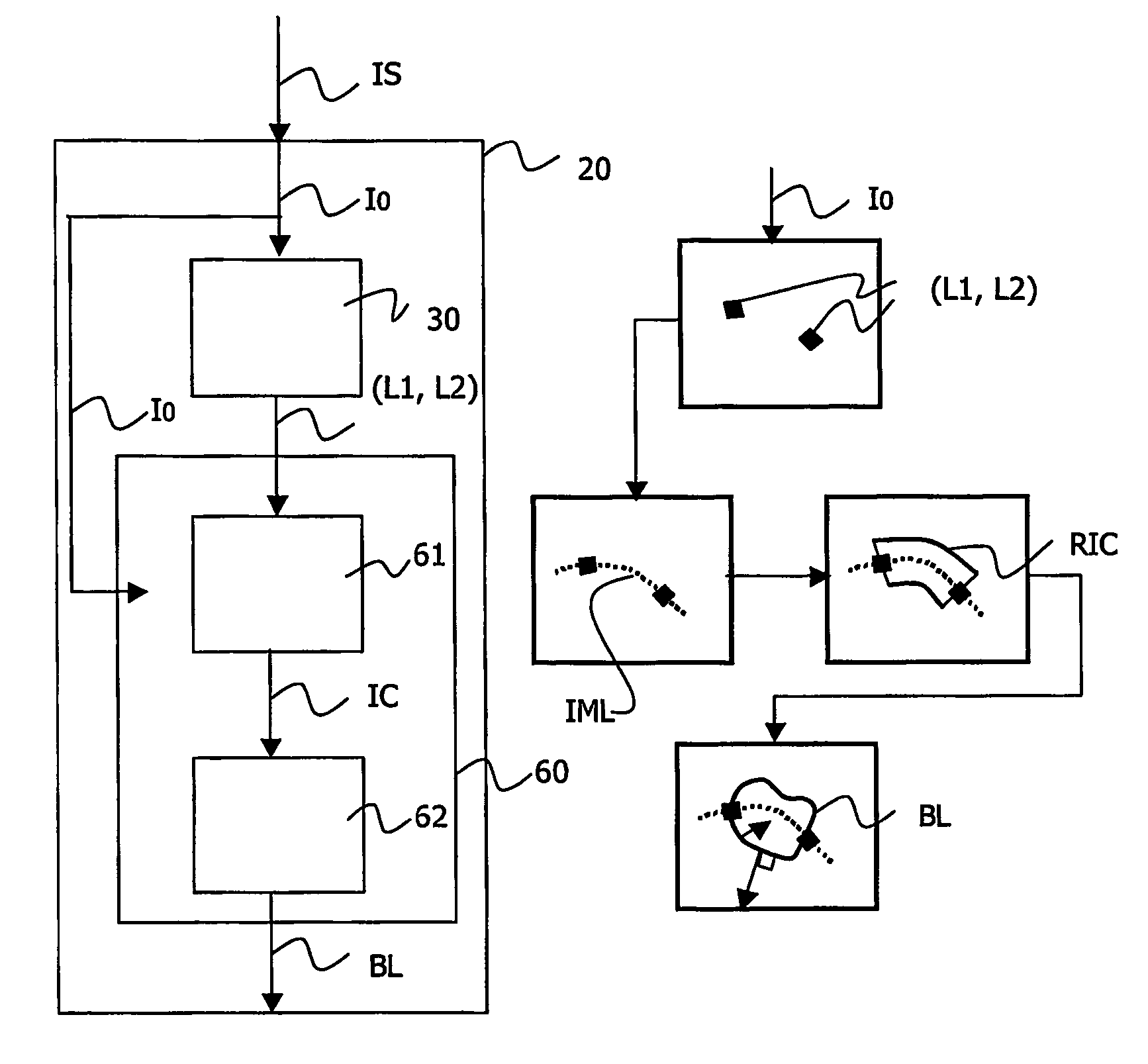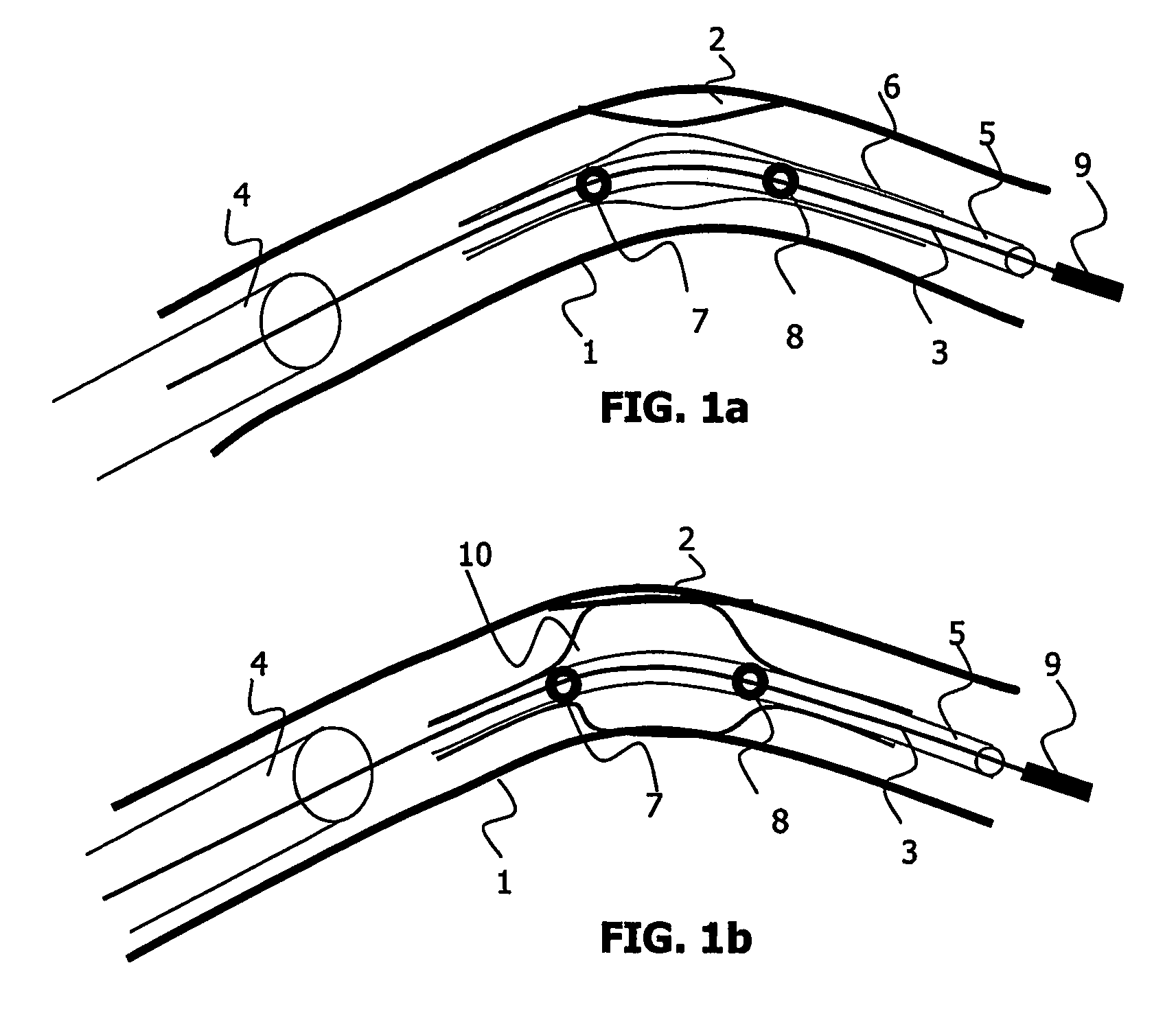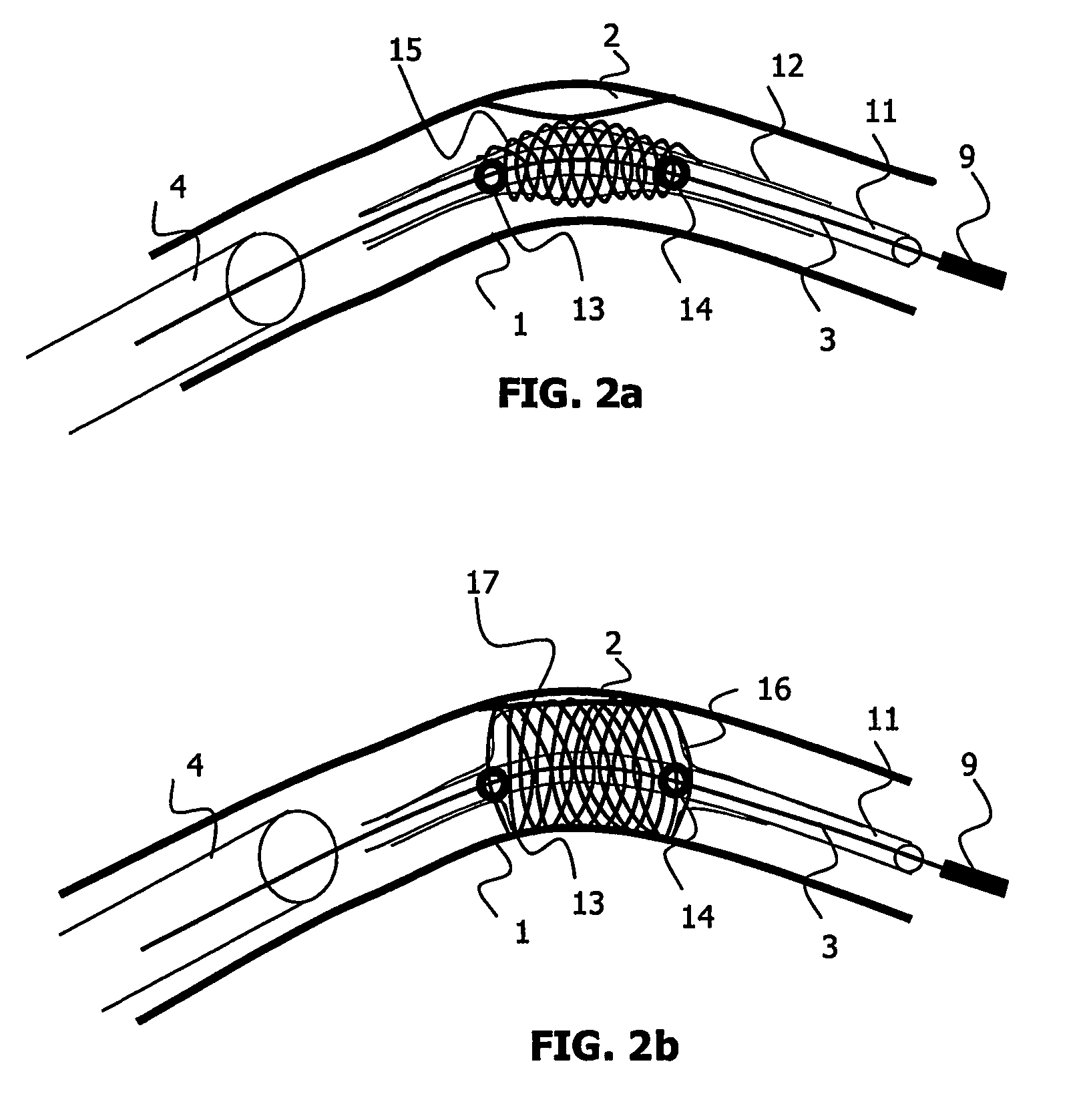Medical viewing system and method for detecting borders of an object of interest in noisy images
a viewing system and noisy image technology, applied in the field of viewing systems, can solve problems such as affecting the appearance of objects, so as to enhance the borders of objects, enhance the sequence of images, and enhance the contour of objects.
- Summary
- Abstract
- Description
- Claims
- Application Information
AI Technical Summary
Benefits of technology
Problems solved by technology
Method used
Image
Examples
second embodiment
[0075]In the invention, the viewing system (as shown in FIG. 9) also comprises enhancement means 70 for enhancing said borders using said location of borders BL and for delivering an enhanced sequence of images EIS. Since said location of borders BL is known, the borders of the object of interest are enhanced very easily. Said borders are formed by points that have a gray level value. Said enhancement means 70 simply consist in increasing said gray level values so as to make the borders more visible. An outstanding enhancement is thus obtained and the main issue is to tune the enhancement so as to keep the enhanced sequence of images EIS acceptable for the practitioner.
third embodiment
[0076]In the invention, the viewing system (as shown FIG. 9) also comprises measurement means 71 for measuring characteristics CM of said object of interest using said location of borders BL. An interesting characteristic measure of a tubular object like a stent or an artery is a collection of widths of said object measured at several locations along a length of said object, for instance along said inter-marker line IML for a stent or along the tip for a stenosis. Variations of said widths may indicate whether the stenosis has been properly reduced or whether the stent has been properly expanded.
[0077]It is to be noted that the invention is not limited to width measures. The knowledge of the stent or of the artery borders also enables for instance an estimation of an agent contrast flow in the stenosis area to be derived, by measuring the mean contrast of contiguous sections of the artery at different times.
fourth embodiment
[0078]In the invention, the viewing system (as shown FIG. 9) also comprises 3D representation means 72 for delivering a three-dimensional (or 3D) representation 3DR of said object of interest using said location of borders BL. Such a 3D representation of a tubular object of interest, like an artery or a stent is easily obtained from two views (I0, I0′), which are preferably orthogonal views of said tubular object. It is not an issue in the domain of angiography, where an X-ray C-arm medical examination apparatus may provide two views in directions perpendicular to the axis of the tubular object and perpendicular to each other. It is also to be noted that very little distortion is introduced since the patient is placed at the center of the medical examination apparatus.
[0079]The localizers (L1, L2, L′1, L′2) detected in each sequence of images are matched and define a 3D referential in which all the points of the borders of the object of interest may be positioned in 3D. It is then p...
PUM
 Login to View More
Login to View More Abstract
Description
Claims
Application Information
 Login to View More
Login to View More - R&D
- Intellectual Property
- Life Sciences
- Materials
- Tech Scout
- Unparalleled Data Quality
- Higher Quality Content
- 60% Fewer Hallucinations
Browse by: Latest US Patents, China's latest patents, Technical Efficacy Thesaurus, Application Domain, Technology Topic, Popular Technical Reports.
© 2025 PatSnap. All rights reserved.Legal|Privacy policy|Modern Slavery Act Transparency Statement|Sitemap|About US| Contact US: help@patsnap.com



